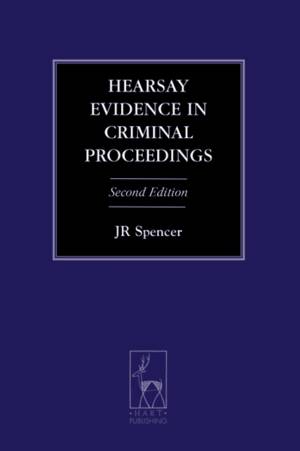
Je cadeautjes zeker op tijd in huis hebben voor de feestdagen? Kom langs in onze winkels en vind het perfecte geschenk!
- Afhalen na 1 uur in een winkel met voorraad
- Gratis thuislevering in België vanaf € 30
- Ruim aanbod met 7 miljoen producten
Je cadeautjes zeker op tijd in huis hebben voor de feestdagen? Kom langs in onze winkels en vind het perfecte geschenk!
- Afhalen na 1 uur in een winkel met voorraad
- Gratis thuislevering in België vanaf € 30
- Ruim aanbod met 7 miljoen producten
Zoeken
€ 71,95
+ 143 punten
Omschrijving
The Criminal Justice Act 2003 re-wrote the hearsay evidence rule for the purpose of criminal proceedings, enacting the recommendations of the Law Commission together with some proposals from the Auld Review. In 2008, Professor Spencer wrote a book explaining the new law, intended for practitioners as well as academics. Following the style of his earlier book about the new law on bad character evidence, the core of the hearsay book was a section-by-section commentary on the relevant provisions of the Act, discussing the case law that had interpreted them. Since the appearance of the first edition, the new law on hearsay evidence has been the subject of a spectacular exchange between the UK Supreme Court and the European Court of Human Rights, the effects of which the Court of Appeal has interpreted in several leading cases. In this new edition, the commentary is revised to take account of these developments. As in the first edition, the commentary is preceded by chapters on the history of the hearsay rule, and the requirements of Article 6(3)(d) of the European Convention on Human Rights. It is followed by an appendix containing the text of the statutory provisions and a selection of the leading cases.
Specificaties
Betrokkenen
- Auteur(s):
- Uitgeverij:
Inhoud
- Aantal bladzijden:
- 506
- Taal:
- Engels
- Reeks:
Eigenschappen
- Productcode (EAN):
- 9781849464635
- Verschijningsdatum:
- 21/02/2014
- Uitvoering:
- Paperback
- Formaat:
- Trade paperback (VS)
- Afmetingen:
- 157 mm x 231 mm
- Gewicht:
- 771 g

Alleen bij Standaard Boekhandel
+ 143 punten op je klantenkaart van Standaard Boekhandel
Beoordelingen
We publiceren alleen reviews die voldoen aan de voorwaarden voor reviews. Bekijk onze voorwaarden voor reviews.









